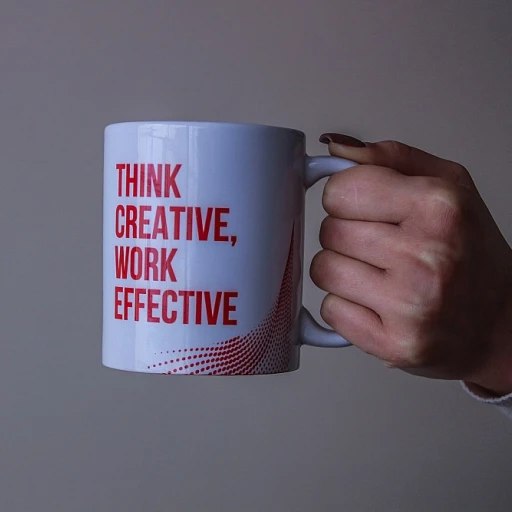
Understanding Micromanagement
A Deep Dive into Micromanagement
Micromanagement is a term that elicits a particular mix of anxiety and frustration for many employees. Simply put, it involves a manager excessively controlling and scrutinizing every small detail of their team's output. At a first glance, micromanagement might not appear immediately harmful—some might view it as a manager’s way of ensuring quality and consistency. However, it often crosses boundaries, negatively impacting the work environment and employee morale.
Recognizing signs of micromanagement is crucial for both employees and organizations. These signs can include excessive oversight in tasks, lack of autonomy for team members, and constant need for updates on employee activities. Employees feeling confined under such control may eventually lack trust in their managers, which can lead to reduced job satisfaction and increased workplace stress.
The constant, hovering presence of a micromanager can instill a hostile work environment. Employees might begin to feel like they are being subjected to a form of workplace bullying, where the dominating management style strips away their autonomy. Employee morale dwindles when their efforts, ideas, and innovations are overshadowed by the relentless focus on minute details by their managers.
In today’s dynamic business landscape, striking a fair work balance between guidance and independence is vital. Managers need to help nurture a trustful work environment, where team members can thrive without the burden of continual oversight. This is not only beneficial for mental health but also enhances creativity and initiative among employees.
Understanding micromanagement is the first step to addressing its impact. Recognizing how these excessive controls can blur into bullying harassment will pave the way for healthier management styles in the evolving workplace. Learn more about effectively gathering feedback in the evolving workplace.
The Psychological Impact of Micromanagement
The Hidden Psychological Toll on Employees
Micromanagement invariably leaves its mark on employees, often inflicting a significant psychological impact. When a manager resorts to excessive control, it can lead to feelings of being undervalued and distrusted. Employees who regularly face micromanaging bosses might experience a decline in job satisfaction and employee morale, creating a hostile work environment. An employee in a micromanagement workplace may feel their contributions are constantly under scrutiny. This excessive oversight erodes trust between team members and their managers, fostering an environment where employees feel powerless. Such an atmosphere is detrimental to mental health, resulting in stress and anxiety, which parallels the effects seen in bullying harassment situations. These adverse effects can deplete employee morale, and when layered with the additional burden of needing to maintain a facade of contentment, employees might begin to question their worth within the workplace. If left unaddressed, these feelings compound, shifting the management style towards one of excessive control akin to workplace bullying. For more insights into how businesses can improve the employee experience, visit this article on evolving employee experiences. Understanding these implications is crucial for managers seeking to foster a fair work environment that promotes trust and encourages a healthy work-life balance.Micromanagement vs. Bullying: Drawing the Line
Distinguishing Micromanagement from Workplace Bullying
Understanding the fine line between micromanagement and workplace bullying is crucial for fostering a healthy work environment. While both can adversely impact employees and their mental health, there are distinct differences that set them apart. Micromanagement typically involves excessive control and oversight by a manager, focusing on tasks and performance. In contrast, workplace bullying encompasses a broader spectrum of behaviors that can include harassment, unfair treatment, or intimidation. One way to differentiate between the two is to assess the intent and frequency of the actions. Micromanagers may lack trust in their team’s abilities, leading to unrelenting scrutiny and control. This management style often stems from a desire to maintain quality and consistency, albeit at the expense of employee morale. On the other hand, bullying is characterized by a pattern of hostile actions that violate general protections and create a hostile work environment. Employees feeling the strain of a micromanaging boss might perceive it as bullying, especially if their autonomy is continuously undermined. However, it's important for them to assess whether the actions are consistent with the company's privacy policy and management expectations. Employees may often feel trapped in a cycle of excessive oversight without a sense of fairness or respect. Addressing these challenges involves recognizing the signs of micromanagement and bullying in the workplace. Managers must strive to build trust with their team members and create an environment where employees feel valued and respected. By implementing fair work practices and open communication, businesses can help ensure a respectful workplace where employee morale and job satisfaction are prioritized. For insights on how these issues intersect with future trends in employee engagement, you may find "Enhancing Employee Satisfaction: The Future of Perks at Work" a relevant read.The Role of Technology in Micromanagement
The Impact of Technology on Modern Workplaces
Technology has transformed the modern workplace, bringing both opportunities and challenges in the sphere of management and employee relations. In particular, technological advancements have fueled new forms of micromanagement, as digital tools can sometimes be used to exert excessive control over employees and their tasks.
In today's work environment, managers have access to a myriad of tools that provide real-time data on every aspect of an employee's work. While these tools can increase productivity, they can also contribute to signs of micromanagement by enabling managers to engage in excessive oversight. Such practices can harm employee morale and contribute to a hostile work environment, akin to workplace bullying.
Moreover, the role of technology in the workplace has blurred the lines between monitoring performance and infringing on privacy. Many employees feel their right to a fair work environment is compromised when they lack trust in management's use of surveillance technologies. The outcome can be detrimental, hindering job satisfaction and possibly leading to issues of bullying and harassment.
However, technology is not inherently negative. When used correctly, it has the potential to promote a trust-based management style. Managers can focus on helping employees feel empowered by providing them with the resources they need and using technology to support rather than control them. By fostering an environment that encourages innovation, team members can thrive without the shadow of micromanaging bosses.
Moving forward, it is essential for businesses to implement privacy policies that protect employees while supporting productivity. Striking a balance is crucial to prevent the erosion of employee morale and general protections. Implementing thoughtful management styles and technology usage policies can lead to healthier and more engaging workplaces, benefiting both employees and the business as a whole.
Strategies for Employees to Address Micromanagement
Steps Employees Can Take To Handle Micromanagement
In a workplace where micromanagement prevails, employees may find their job satisfaction dwindling due to excessive oversight. It is crucial for team members to take proactive steps in addressing this management style to create a more harmonious work environment. Seeking dialogue is typically the first step. An open conversation can often help bridge the gap between employees and managers. Discussing the signs of micromanagement in a non-confrontational manner can lead to a mutual understanding and potentially shift the management style to one that fosters trust. Building trust through performance is another crucial approach. When employees consistently demonstrate reliability and competence in their tasks, they can reduce the need for excessive control from managers. This is essential in reshaping the dynamics of the workplace without escalating into feelings of workplace bullying. Additionally, seeking support from HR or management teams can provide a structured way to address issues. Highlighting how micromanagement affects employee morale and mental health could encourage a review of current management practices to ensure a fair work environment. Employees should also focus on maintaining open lines of communication with their peers. Creating an environment of support among colleagues can help alleviate the effects of excessive micromanagement, making the workplace feel less like a hostile work zone. Furthermore, familiarizing oneself with general protections and privacy policies offers additional reassurance and empowers employees to advocate for their rights if they feel subjected to management styles that border on bullying harassment. Lastly, personal development is key. By continually enhancing one’s skills and competencies, employees not only boost their own profile but also demonstrate their capacity for independent work, thereby alleviating concerns of micromanagers and promoting a healthier work environment.Future Trends in Management Styles
Trending Management Styles: What Lies Ahead?
The landscape of work and management is ever-evolving, with innovative practices continually reshaping how teams operate. As businesses strive to enhance productivity and employee satisfaction, there's a noticeable shift toward more dynamic management styles. This change stems from the need to address the negative impact of micromanagement and excessive control on employee morale and job satisfaction. The demand for an environment where employees feel trusted and valued is pushing companies to adopt more flexible approaches. Here are some trends that are gaining traction:- Empowerment over Control: Instead of excessive oversight, future management will focus on empowering team members. Employees will have more autonomy in their tasks, fostering a sense of ownership and personal growth. This shift can help mitigate the feelings of a hostile work environment often associated with micromanaging.
- Collaborative Leadership: Managers are increasingly encouraged to foster collaboration rather than domination. By integrating team input into decision-making processes, businesses can cultivate a fair work environment where everyone feels heard and valued.
- Focus on Mental Health and Well-Being: With growing awareness of mental health issues, companies are recognizing the importance of supporting employees' mental well-being. This approach counters the potentially harmful effects of micromanagement by creating a supportive workplace conducive to job satisfaction.
- Technological Integration: Advanced tools are being leveraged to promote efficient communication and collaboration while respecting employee privacy. These technologies can help avoid the pitfalls of a micromanagement workplace by allowing managers to oversee progress without engaging in excessive control.
- Adaptability and Agility: In today's fast-paced business environment, adaptability has become essential. Managers who embrace flexibility and promote an agile work environment can better support their teams, fostering trust and minimizing instances of workplace bullying and harassment.












